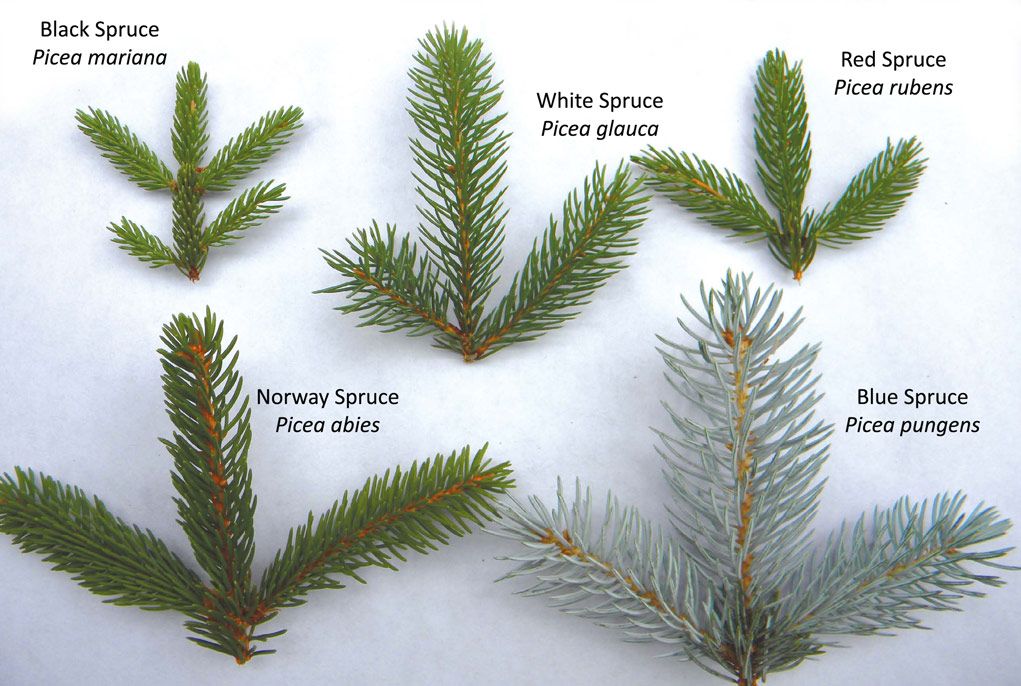Spruce trees are a type of coniferous evergreen tree characterized by their pointed needle-like leaves. They come in various forms, including dwarf spruces and spruce shrubs, making them suitable for different garden landscapes. Tall spruce trees are typically found in coniferous forests.
The genus Picea encompasses 35 species of spruce trees. These evergreen trees are related to other coniferous trees such as pine, cedar, fir, and hemlock.
Some common types of spruce trees include the well-known Norwegian spruce, often used as a popular Christmas tree. Other commonly planted spruces are the Alberta spruce, White spruce, Engelmann’s Spruce, and the Bird’s Nest Spruce, which is a small and low-growing landscaping plant suitable for front or backyards.
Spruce trees are among the tallest conifers found in evergreen forests. For example, the Sitka spruce can reach heights of over 330 feet (100 meters). Dwarf spruce trees and low shrubs are ideal choices for creating specimen trees or evergreen hedges in yards of any size.
In their natural habitat within the cold and temperate climates of the Northern Hemisphere, spruces can live for over 200 years. If you plant spruce shrubs or dwarf spruce trees in your backyard, you can expect them to grow for up to 60 years. Most spruce trees have a slow growth rate, typically around 6 to 11 inches (15 to 29 cm) per year. However, the Norway spruce (Picea abies) and Sitka spruce (Picea sitchensis) are known to have considerably faster growth, averaging 3 feet (1 meter) per year.
As members of the softwood tree category, spruce trees belong to the coniferous species. The wood of spruce trees, similar to soft pine, possesses a gentle quality. However, spruce wood is generally of higher quality and more durable compared to pine wood. This article will discuss the most common types of spruce trees, including providing pictures and scientific names to aid in identification.
Spruce Tree Identification
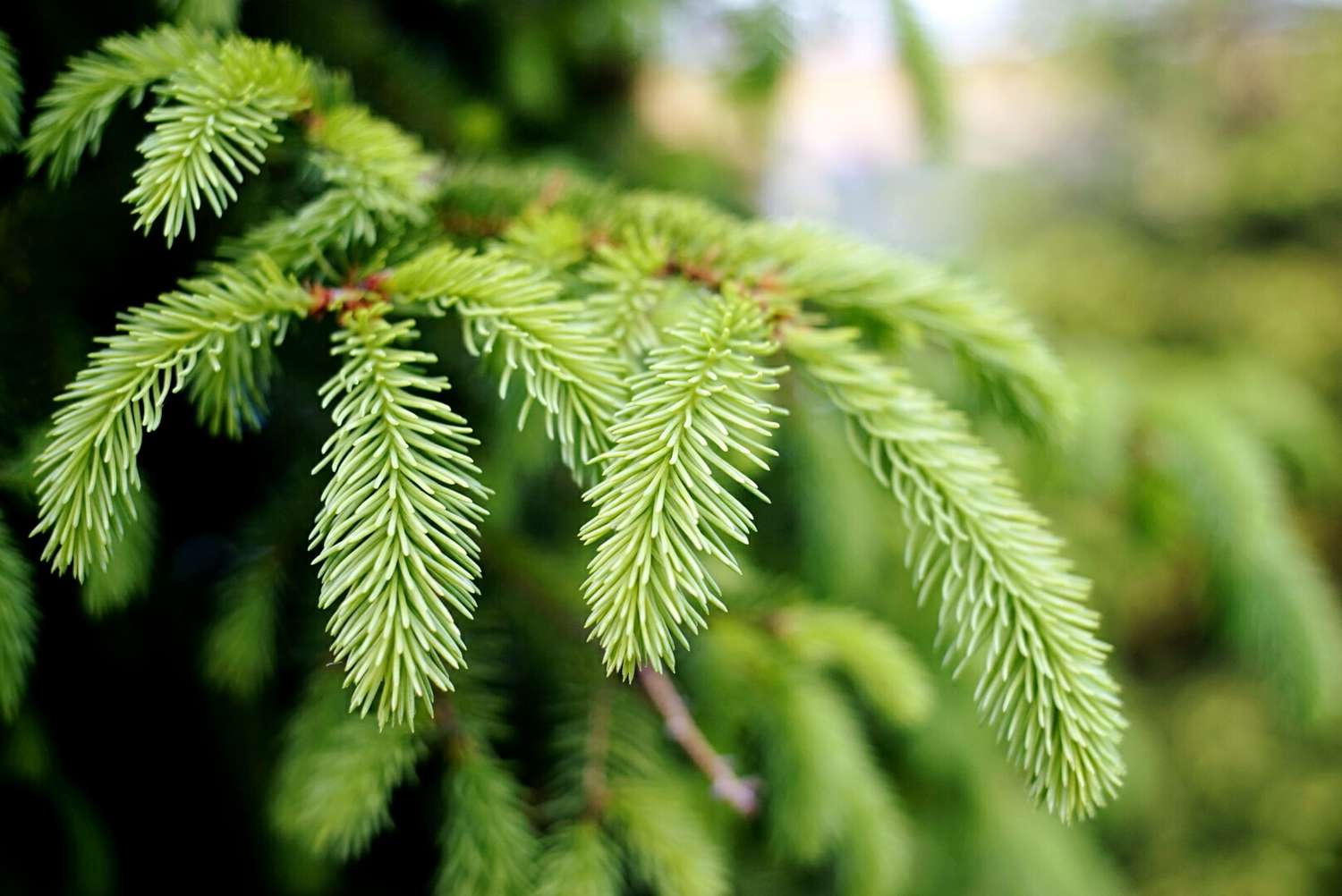
In this image, we can observe the distinct needles of a spruce tree. Unlike pine needles, spruce needles have four sides, which sets them apart. These needles are firmly attached to the branches and can be easily rolled between your fingers.
Another characteristic feature of spruce trees is their cones. The cones of spruce trees are covered in smooth and thin scales, providing a unique appearance. Unlike the rigid cones of some other tree species, spruce cones are flexible and can be easily bent.
Additionally, spruce trees are known for their bushy branches that point upwards, giving them a distinctive shape.
Spruce Trees Vs. Pine Trees Vs. Fir Trees
Spruce trees can be identified by their square-shaped needles, which easily roll between your fingers, in contrast to the flat needles of fir trees. Unlike the long and soft needles of pine trees, spruce needles are short and stiff. Pine trees typically have needles that grow in bundles of two to seven, while spruce trees have individual needles growing directly from the branches.
The overall shape of a tree can also help distinguish between spruce and pine. Spruce trees have a dense and bushy appearance, with branches that tend to grow upwards. In contrast, pine trees have a more open and downward-growing structure, with minimal foliage. When comparing them to spruce needles, the leaves of cedar trees and Douglas firs are soft to the touch and lack the sharp, jagged texture.
By considering these characteristics, such as needle shape, growth pattern, and foliage texture, one can differentiate spruce trees from pine trees, fir trees, cedar trees, and Douglas firs.
Types of Spruce Trees (With Pictures and Names)
Let’s explore the many sorts of majestic spruce trees in further depth.
Norway Spruce (Picea abies)
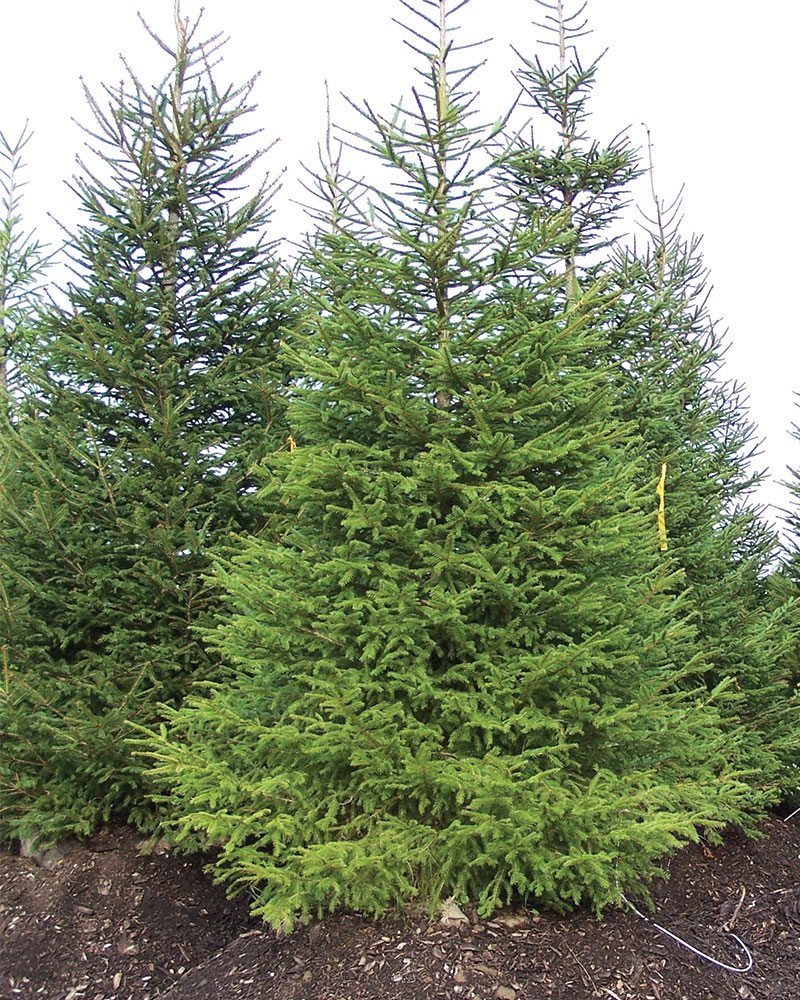
The Norway spruce is a fast-growing evergreen tree that is commonly found in various coniferous forests and is a member of the European spruce family. The wood of the Norwegian spruce is highly regarded for its quality, making it suitable for a range of applications including furniture, paper production, and crafting musical instruments. Due to their dense foliage, these spruce trees are often utilized as living privacy screens, windbreaks, and hedges. Their abundant and thick foliage provides excellent coverage and protection.
Spruce tree identification
The distinctive appearance of Norway spruce trees can be recognized by their pyramidal shape and branches that grow upward. The short green needle leaves have blunt ends, giving them a unique look. These trees also produce long and oblong seed cones. In their natural habitat, Norway spruces can reach towering heights of up to 180 feet (55 meters). However, there are also dwarf and compact cultivars of Norway spruce that stay much smaller, growing only a few feet tall.
White Spruce (Picea glauca)
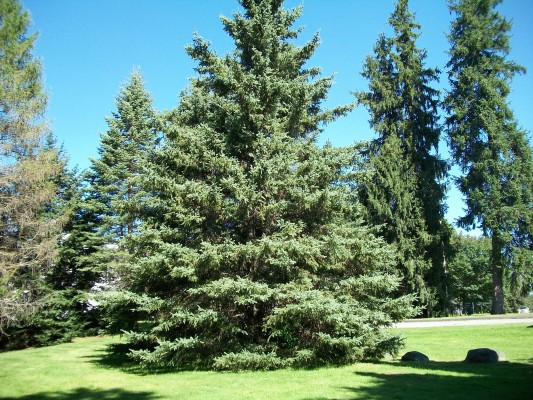
White spruce is a widely encountered tree in the commercial sector, thriving in the harsh winters of Alaska and Canada. It plays a significant role in the timber industry, as its wood is commonly used in construction and other applications. The Alberta White spruce, also known as var. Picea glauca, is a specific variety of this species. Additionally, there is a dwarf variant of this impressive spruce tree known as albertiana ‘Conica’.
Colorado Blue Spruce (Picea pungens)

White spruce trees are easily identified by their scaly white bark, slender cylindrical crown, and long needle-like leaves. The cones of this species are thin and not as large as those found on Norway spruce trees. In terms of height, white spruce trees typically reach approximately 100 feet (30 meters). Their majestic appearance and distinct characteristics make them a notable presence in various landscapes.
Colorado Blue Spruce (Picea pungens)
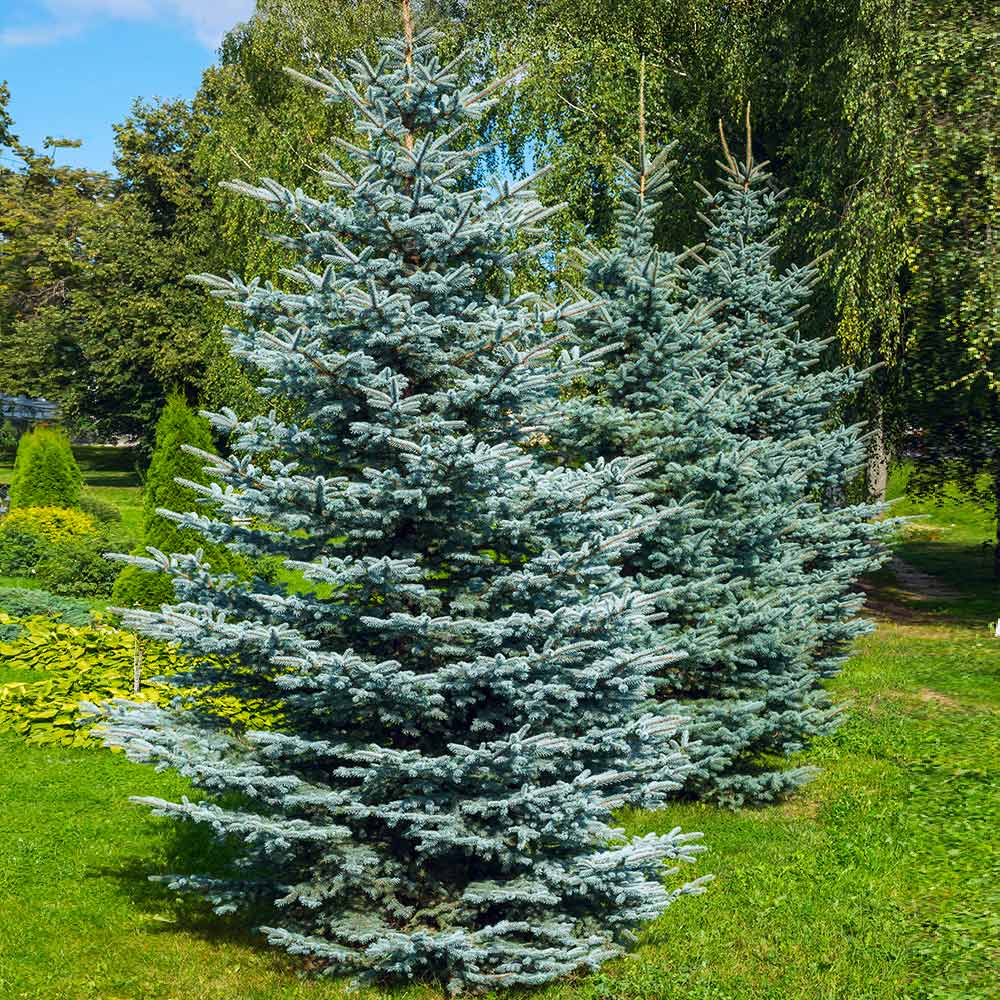
The blue spruce is an exceptional option for a Christmas tree, thanks to its remarkable blue-green-gray needles. This particular evergreen, shown on the right, thrives in USDA zones 1 to 7 and is renowned for its ability to withstand cold temperatures. It is a compact tree that can be commonly found throughout North America.
The Colorado blue spruce is highly prized for its attractive appearance and distinct pyramid-like shape. Its foliage displays a striking blue color, which is easily admired in pictures. If you’re looking for a weeping spruce tree suitable for small or large gardens, the ‘The Blues’ variety of the Colorado spruce is an outstanding choice.
Spruce tree identification
The distinctive waxy blue-green needle-shaped leaves of the Colorado blue spruce serve as a distinguishing feature. The botanical term “pungens” describes the short, spiky needles, which aptly means “sharply pointed.” In their natural habitat, Colorado blue spruces can grow as tall as 75 feet (23 meters), while in gardens, they typically reach heights of around 50 feet (15 meters).
Serbian Spruce (Picea omorika)
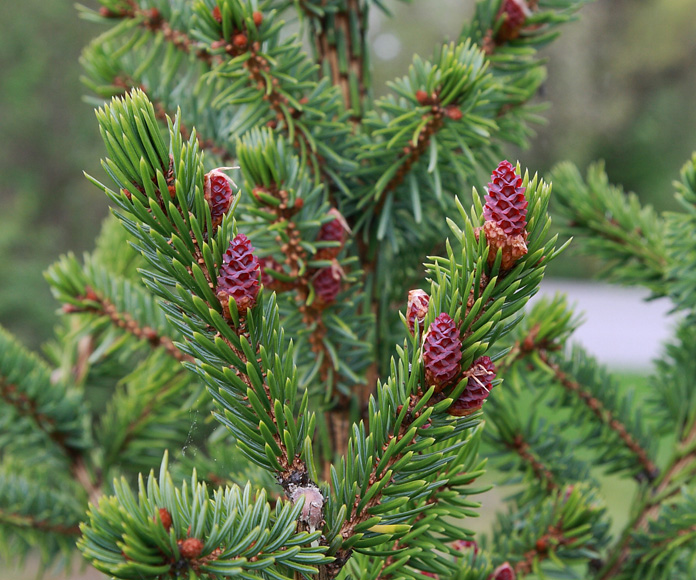
On the left, we have the Serbian spruce. The weeping Serbian spruce, scientifically known as Picea omorika ‘Pendula,’ is a versatile tree that can thrive in various conditions and tolerate some drought and shade. It is particularly popular as a standout tree in large gardens or parks due to its tall and slender form.
Compared to towering spruce varieties such as the Norway and Sitka spruces, the Serbian spruce species tends to grow to a medium height. If you’re looking for a smaller option for your garden landscape, the dwarf tree called Picea omorika ‘Nana’ or the weeping spruce Picea omorika ‘Pendula’ would be suitable choices.
Spruce tree identification
The Serbian spruce trees can be easily recognized by their distinctive columnar growth pattern. These medium-sized trees have a shape resembling a pencil, reaching heights of approximately 65 feet (20 meters). The lush foliage is composed of small, dark-green needle-like leaves, accompanied by short, spindle-shaped cones.
Black Spruce (Picea mariana)
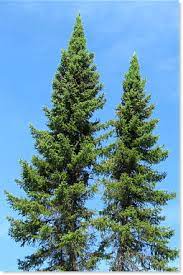
The black spruce, belonging to the Pinacaea family, is a coniferous tree that tends to grow more like a shrub and has a slow growth rate. Due to its soft and low-quality wood, this spruce tree is not highly valued in the timber industry. It is commonly found in wet and swampy areas in Canada, Alaska, and the upper Northeast of the United States.
Identification of the black spruce tree
A distinctive feature of the black spruce is its small, stubby purple cones. The needle-like leaves of this species are approximately half an inch (1.5 cm) wide and have a square shape. As a small conifer, it typically grows to heights ranging from 15 to 50 feet (5 to 15 meters). The trunk is covered in a thin, scaly grayish-brown bark.
Engelmann’s Spruce (Picea engelmannii)
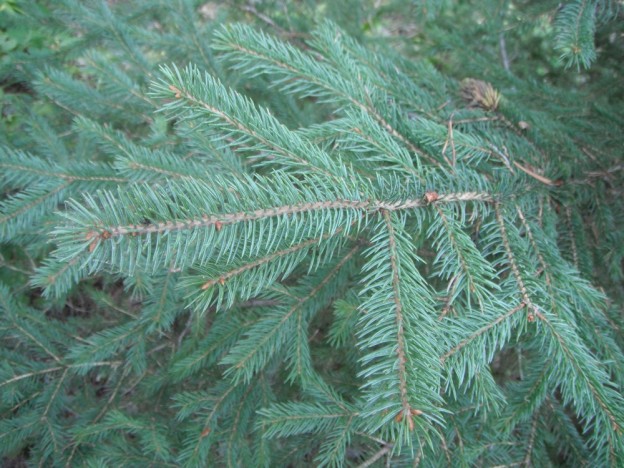
In the left picture, you can observe a young Engelmann’s spruce tree. The mature spruce tree pictured is an Engelmann’s spruce, named after the botanist George Engelmann. This slender, cone-shaped tree thrives at high elevations on the northeast coast of North America. It is a slow-growing evergreen conifer that produces dense wood, which is highly valued for construction and crafting musical instruments. Due to its pyramid shape and relative immaturity, it is also well-suited as a Christmas tree.
Identification of the spruce tree
Engelmann spruces can be recognized by their medium-sized, cylindrical, and narrow shape. These trees typically reach an average height of 100 feet (30 meters). Amongst the dense spruce foliage, you’ll find elegant blue-green needles and small, swinging brown cones in a conical shape. The needle leaves of this species can grow up to 1.1 inch (3 cm) in length.
Sitka Spruce (Picea sitchensis)
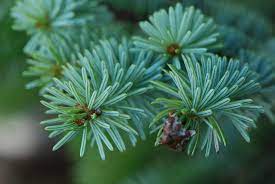
Sitka spruce (Picea sitchensis) stands tall among the 35 species in the Picea genus, making it one of the tallest conifer trees. It holds the fifth position among the largest conifer species. This evergreen tree boasts a massive size, with a broad crown and small branches below 100 feet (30 meters). Sitka spruces are known for their rapid growth and are highly valued for their timber, thriving in nutrient-rich soil.
Identification of the spruce tree
Sitka spruce trees can be identified by their needle-like leaves, which are pointed and approximately 1″ (2.5 cm) long. The blue-green color of the leaves sets them apart from other species. Another distinctive feature is the presence of slender cones hanging from the branches, measuring about 4 inches (10 cm) in length. The long, straight trunk of the Sitka spruce exhibits a scaly and flaking bark, which can be easily observed and recognized.
Red Spruce (Picea rubens)
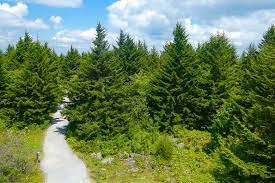
From the observation tower atop Spruce Knob in West Virginia, you can admire the breathtaking sight of a red spruce forest. This species, also known as West Virginia spruce or yellow spruce, thrives along the eastern coast of North America. In its natural habitat, the red spruce exhibits a moderate growth rate and has the potential to live for over 200 years.
The red spruce, often sought after as a Christmas tree, boasts a perfectly shaped pyramid structure. Its yellow wood is highly valued for construction purposes and the crafting of musical instruments.
Identification of the spruce tree
The red spruce can be recognized by its dense foliage and small brown cones, as depicted in the photos. Its distinct feature includes curved and pointed yellowish-green needles emerging from the bark. The bark itself is gray-brown in color and reveals a reddish hue on the inside, which aids in identifying the West Virginia spruce. This tree can reach heights ranging from 55 to 130 feet (18 to 40 meters) and can be found throughout the region.
Caucasian Spruce (Picea orientalis)
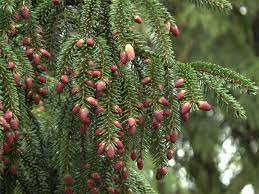
The Oriental or Caucasian spruce is a captivating ornamental tree known for its appealing light-green needle leaves. In the images provided, you can observe Caucasian spruce trees on the left, while smaller cultivars like Barnes and Nana are depicted on the right. This spruce species is widely utilized for lumber and paper production, despite its slow growth rate. Certain cultivars, such as ‘Aureospicata,’ exhibit striking foliage in a dazzling gold color. When incorporating spruces into landscape gardens, consider seeking out ‘Barnes’ or ‘Nana’ varieties for their specific characteristics.
Identifying the Caucasian spruce is made easy by its distinctive characteristics. The short needles of this spruce species measure only 0.3 inches (8 mm) in length. During springtime, the emerald-green foliage is adorned with long and slender cones that bring forth hues of red and purple, enhancing its visual appeal. When fully grown, the Caucasian spruce can reach impressive heights ranging from 100 to 145 feet (30 to 45 meters).
When it comes to spruce trees, many of them grow to be large and tall, making them unsuitable for planting in smaller residential or garden spaces. However, if you’re looking to enhance the beauty of your home with evergreen conifers, there are options available in the form of dwarf spruce trees and shrubby spruces. These compact varieties allow for more control over their height, and with proper trimming, they can be shaped to resemble shrubs. Let’s explore some wonderful examples of these smaller spruce specimens.
Bird’s Nest Spruce (Picea abies ‘Nidiformis’)

The bird’s nest spruce is a compact shrub that thrives in containers or small gardens. It has a slow growth rate and boasts a spherical shape with a flat top. This particular spruce variety is a cultivar of the Norway spruce, as indicated by its scientific name. Unlike its larger counterpart, it does not grow into a full-sized tree but remains a petite bush. Its popular name is derived from the rounded and bushy growth pattern, which resembles a bird’s nest at the center. The bird’s nest spruce is an excellent choice as a specimen plant or for creating short evergreen hedges, particularly suitable for rock gardens.
When identifying this particular spruce shrub, its spherical shape with a flat top stands out prominently. The distinguishing feature of this low-growing shrub is its short and blunt needles, which typically measure around an inch (2.5 cm) in length. Despite many years of growth, the plant tends to remain relatively small, reaching heights of only 2 to 4 feet (0.6 to 1.2 meters).
Weeping Norway Spruce (Picea abies ‘Pendula’)
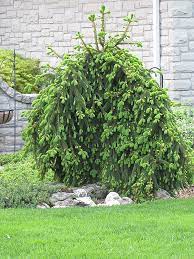
The melancholic Norway spruce is a cascading coniferous tree that thrives in frigid environments. Its hanging boughs bear impressively elongated cones, measuring around 9 inches (22 cm) in length. These branches gracefully descend until they touch the earth, while the central trunk necessitates assistance. Under abundant sunlight, one can even cultivate this particular spruce variety as a captivating groundcover.
Identifying the Spruce Tree
This unique tree variety stands out with its drooping branches and sharp, vibrant green foliage. When properly nurtured, the weeping Norway spruce can reach an impressive height of 10 to 15 feet (3.5 to 4.5 meters).
Dwarf Norway Spruce (Picea abies ‘Pumila’)
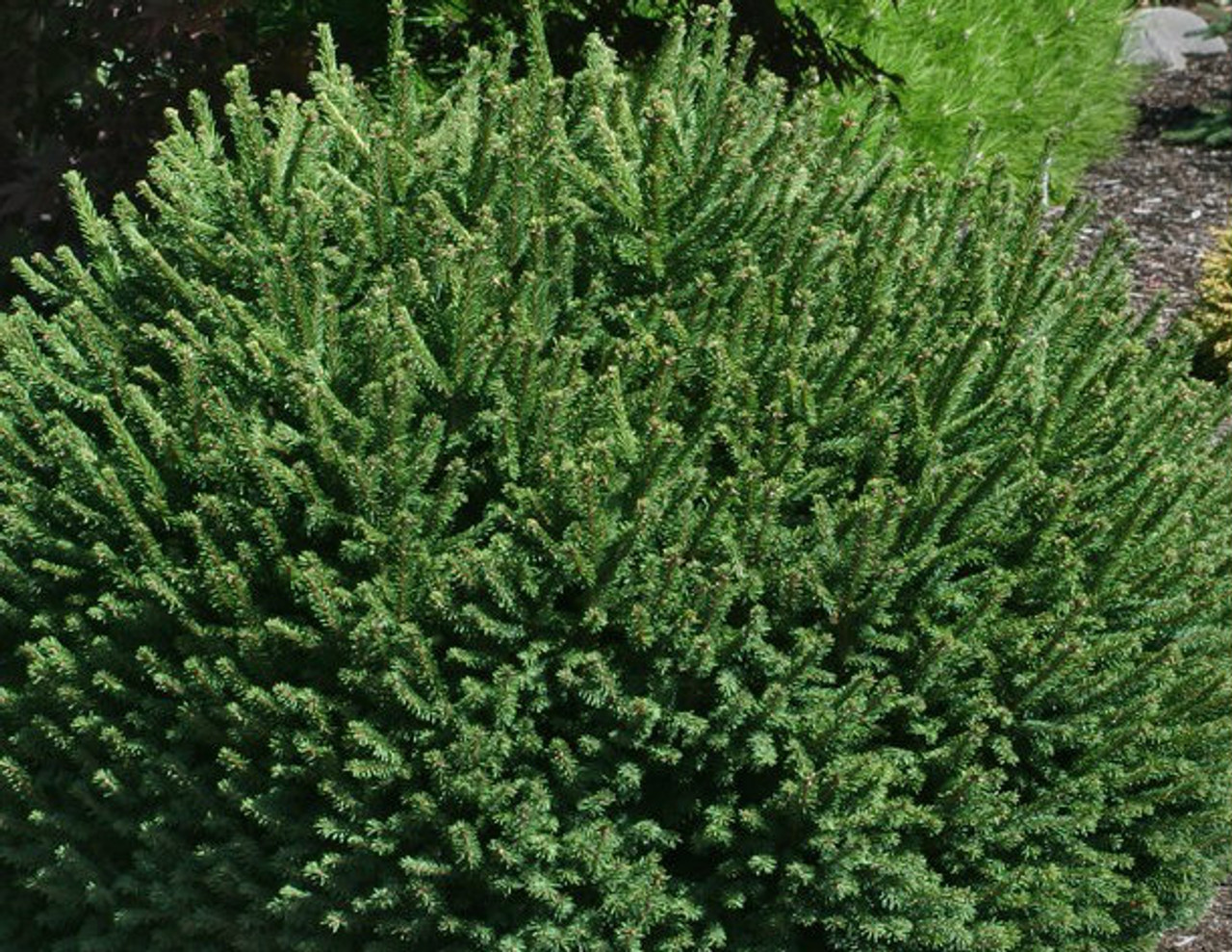
The ‘Pumila’ variety of Dwarf Norway spruce is better described as a compact shrub rather than a miniature evergreen tree, making it an excellent choice for smaller garden spaces. Its dense foliage forms a beautiful, flat-topped evergreen bush. These slow-growing plants can thrive in a variety of soil types and prefer full sun. The most captivating aspects of this spruce are its compact growth and vibrant green foliage.
Identifying the Spruce Tree
The dwarf shrub displays foliage resembling that of the Norway spruce. This compact cultivar has a modest height of 4 feet (1.2 meters). Although it grows quickly at a rate of about 5 inches (12 cm) per year, it still takes a few years to reach full maturity.
Dwarf Norway Spruce (Picea abies ‘Conica’)
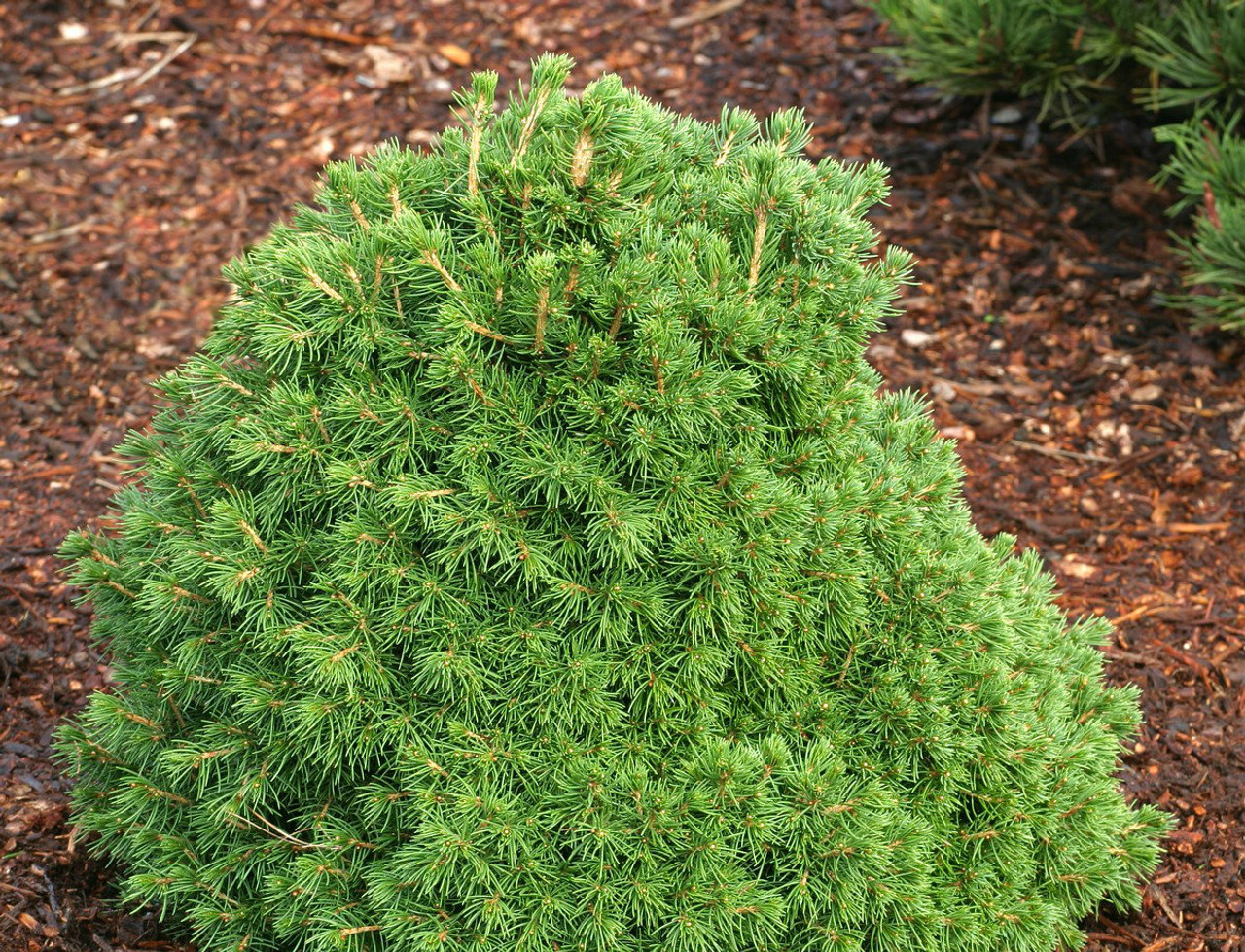
The “Conica” dwarf Norway spruce stands out as one of the most popular choices among compact conifers. Its vibrant green foliage, composed of lush green needles, forms a striking pyramidal shape. With its upright growth, dense foliage, and conical structure, this dwarf spruce is well-suited for various landscaping purposes, including hedges, standalone trees, and foundation plantings.
Identifying the Spruce Tree
The distinct characteristics of the dwarf Norway spruce include its tightly clustered, vivid green foliage and its conical shape. This particular spruce tree is known for its slow growth rate.
